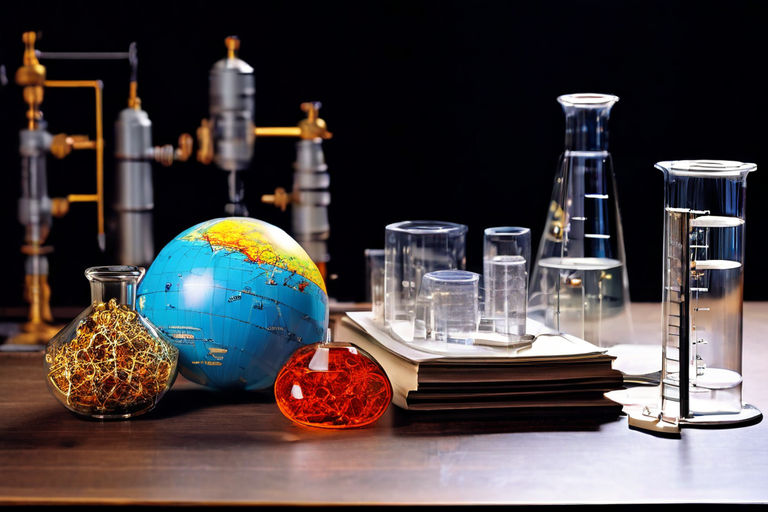- Integrated Physics and Chemistry (IPC) education is an approach that combines the study of physics and chemistry into a single course. This integrated approach has several benefits for students and the learning process
- Introduction
- Enhanced Understanding of Real-World Applications
- Connecting Physics and Chemistry Concepts:
- Properties of Matter
- Energy Transformations
- Problem-Solving in Real-Life Contexts
- Connecting Concepts Across Disciplines
- Reinforcing Theoretical Concepts
- Developing Scientific Inquiry Skills
- Bridging Physics and Chemistry
- Real-world Applications
- Collaboration and Communication
- Connection to Career Skills
- Interconnectedness in STEM Fields
- Practical Applications in Technology
- Research and Innovation
- Problem-Solving in Engineering
- Integration of Computational Skills
- Preparation for Advanced Studies
- School Infrastructure Requirements
- Teacher Training Needs
- Integrating Assessment Methods Across Disciplines
- Curriculum Development and Alignment
- Resistance to Change
- Addressing Diverse Student Backgrounds
- Interdisciplinary STEM Education Trends
- Advancements in Curriculum Development
- Technology Integration
- Global Collaboration and Networking
Integrated Physics and Chemistry (IPC) education is an approach that combines the study of physics and chemistry into a single course. This integrated approach has several benefits for students and the learning process
- Holistic Understanding: IPC provides students with a holistic understanding of the physical sciences. It allows them to see the connections and interrelationships between physics and chemistry, fostering a more comprehensive grasp of the fundamental principles governing the natural world.
- Real-world Applications: By integrating physics and chemistry, students can better appreciate the real-world applications of scientific concepts. This approach helps them understand how principles from both disciplines are interconnected and applied in various scientific and technological fields.
- Cross-disciplinary Thinking: IPC encourages cross-disciplinary thinking, promoting problem-solving skills that extend beyond the boundaries of traditional subject areas. Students develop a mindset that allows them to approach scientific challenges with a broader perspective.
- Efficiency and Time-saving: Integrated courses can be more efficient in terms of time and resource utilization. Instead of dedicating separate blocks of time to physics and chemistry, schools can offer a more streamlined curriculum, potentially allowing students to cover a broader range of topics in a given academic year.
- Reduction of Redundancy: In a traditional curriculum, there may be overlap between physics and chemistry topics, leading to redundancy. An integrated approach can help eliminate unnecessary repetition, allowing students to focus on new concepts and applications.
- Enhanced Critical Thinking: IPC encourages students to think critically and analytically about scientific problems. They learn to apply principles from both physics and chemistry to solve complex issues, fostering a deeper understanding of the scientific method and inquiry.
- Interconnected Labs and Experiments: Integrated courses can offer labs and experiments that seamlessly blend physics and chemistry concepts. This approach allows students to engage in experiments that demonstrate the interconnectedness of the two disciplines, reinforcing theoretical knowledge with hands-on experience.
- Preparation for Interdisciplinary Fields: Many scientific and technological fields require an understanding of both physics and chemistry. IPC education prepares students for interdisciplinary fields such as materials science, environmental science, and biochemistry, where knowledge from both subjects is essential.
- Flexibility in Curriculum Design: An integrated approach provides flexibility in designing the curriculum to adapt to evolving educational needs. Educators can tailor the course content to emphasize certain themes or applications based on the interests and goals of the students.
- Preparation for Standardized Tests: Some standardized tests, such as college entrance exams, assess knowledge in both physics and chemistry. IPC education can help students develop a well-rounded skill set, potentially enhancing their performance on these tests.
In conclusion, integrated physics and chemistry education offers a range of benefits, including a holistic understanding of the physical sciences, enhanced critical thinking skills, and preparation for interdisciplinary fields. It can contribute to a more efficient and interconnected learning experience for students.
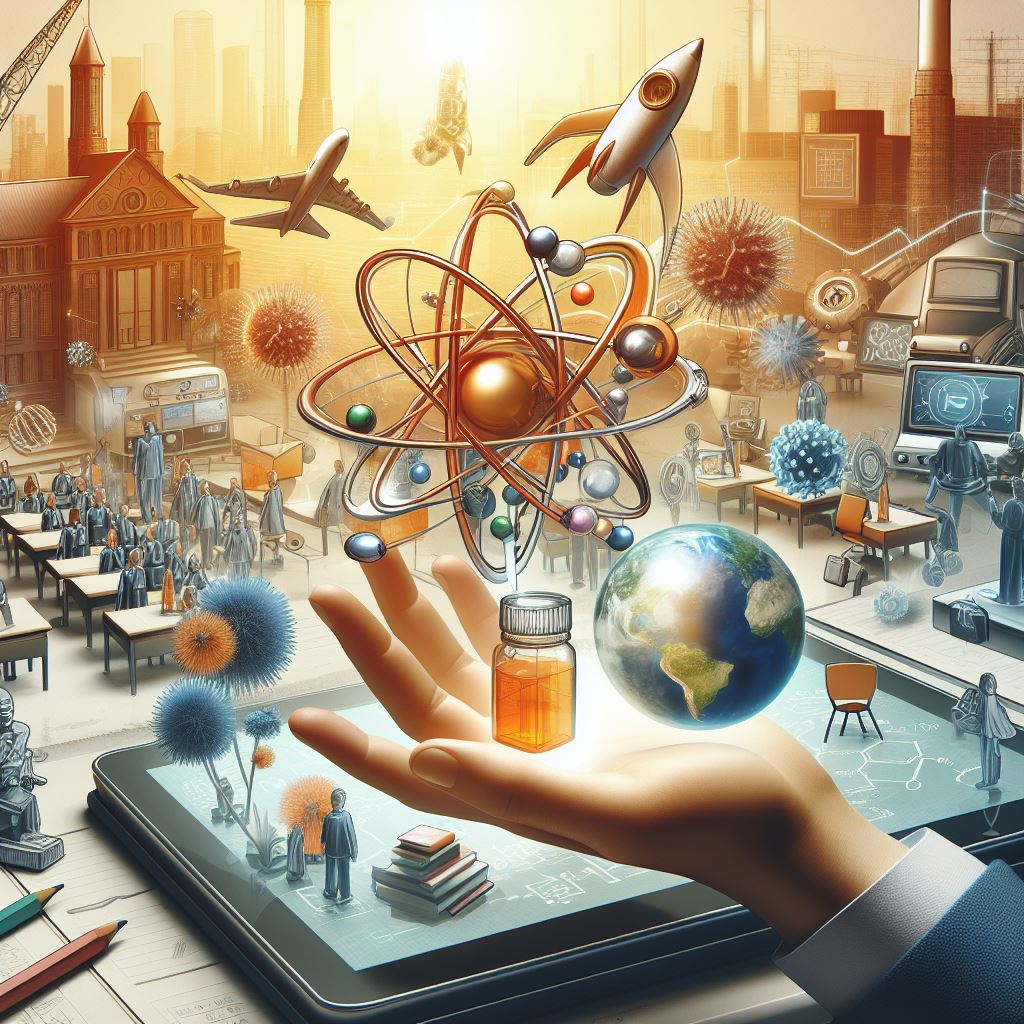
Introduction
Integrated Physics and Chemistry (IPC) education represents a dynamic approach to scientific learning that transcends the traditional boundaries between physics and chemistry. This innovative pedagogical model unites these two foundational branches of science into a single, cohesive course. The fusion of physics and chemistry in the classroom is not just a structural adjustment; it embodies a philosophy that seeks to cultivate a deeper, more interconnected understanding of the natural world. In this introduction, we will explore the essence of IPC, delve into its historical roots, and underscore the significance of interdisciplinary learning in the realm of science.
What is IPC?
Integrated Physics and Chemistry, commonly referred to as IPC, is an educational framework that integrates the fundamental principles of physics and chemistry into a unified curriculum. Unlike the traditional approach that segregates these disciplines into distinct courses, IPC presents a seamless synthesis of concepts, fostering a more comprehensive comprehension of the physical sciences. This approach acknowledges the intrinsic connections between physics and chemistry, recognizing that the boundaries between these disciplines are often artificial and that a more holistic approach can lead to a richer educational experience.
History of IPC Education
The history of IPC education can be traced back to the recognition that the artificial separation of physics and chemistry in academic settings may not align with the inherent interconnectedness of these scientific domains. Over time, educators and curriculum developers have recognized the potential for a more integrated approach to foster a deeper understanding of the principles governing matter and energy. The evolution of IPC reflects a commitment to breaking down disciplinary silos and providing students with a more cohesive and relevant scientific education.
Importance of Interdisciplinary Learning in Science
Interdisciplinary learning lies at the heart of IPC education, reflecting a broader trend in educational philosophy. The importance of interdisciplinary learning in science is underscored by the realization that real-world challenges rarely adhere to the rigid boundaries of individual scientific disciplines. By integrating physics and chemistry, students are better equipped to navigate the complex, interconnected nature of scientific problems. This approach not only enhances their problem-solving skills but also prepares them for the collaborative and interdisciplinary nature of modern scientific research and innovation.

As we embark on an exploration of Integrated Physics and Chemistry education, it becomes evident that this approach represents a paradigm shift in the way we conceive and deliver scientific knowledge. By dismantling the barriers between physics and chemistry, IPC opens doors to a more comprehensive, interconnected, and applicable understanding of the natural world, laying the foundation for a new generation of scientifically literate and adaptable individuals.
The advantages of Integrated Physics and Chemistry (IPC) education are manifold, offering students a unique and enriched learning experience that extends beyond the traditional boundaries of physics and chemistry. This innovative approach provides a host of benefits, including
Enhanced Understanding of Real-World Applications
- IPC enables students to grasp the practical applications of scientific principles in the real world. By integrating physics and chemistry, students can see how these principles work together in various scientific and technological applications, from engineering to environmental science.
Developing a holistic understanding of science concepts involves connecting ideas across disciplines to create a comprehensive framework for understanding the natural world. Integrated Physics and Chemistry (IPC) education plays a pivotal role in achieving this goal by seamlessly blending physics and chemistry concepts. Let’s explore how IPC contributes to a holistic understanding, using examples from integrated topics such as properties of matter and energy transformations.
Connecting Physics and Chemistry Concepts:
- Properties of Matter
- In a traditional setting, properties of matter may be studied separately in physics and chemistry courses. In an integrated approach, students explore how the physical properties of matter (such as density, conductivity, and elasticity) are inherently connected to its chemical properties (like reactivity and bonding). This holistic perspective allows students to understand that the behavior of matter is influenced by both its physical and chemical characteristics.
- Energy Transformations
- Energy transformations are a fundamental concept in both physics and chemistry. IPC brings these concepts together by illustrating how energy changes occur during physical processes (e.g., phase changes) and chemical reactions. Students learn that the principles governing energy transformation are consistent across both disciplines, providing a unified framework for understanding the dynamic nature of energy in the natural world.
Properties of Matter
- Example: Density and Atomic Structure
- IPC allows students to explore the relationship between the density of a substance and its atomic structure. They learn that the arrangement of atoms and molecules in a material influences its density. This integrated perspective connects the macroscopic property of density (a physics concept) with the microscopic structure of matter (a chemistry concept).
- Example: Chemical and Physical Changes
- Students explore how the distinction between chemical and physical changes is not a rigid separation but a continuum. They learn that certain processes, such as dissolving or melting, involve both physical and chemical aspects. This integrated approach helps students see that the classification of changes depends on the level of analysis and the specific conditions.
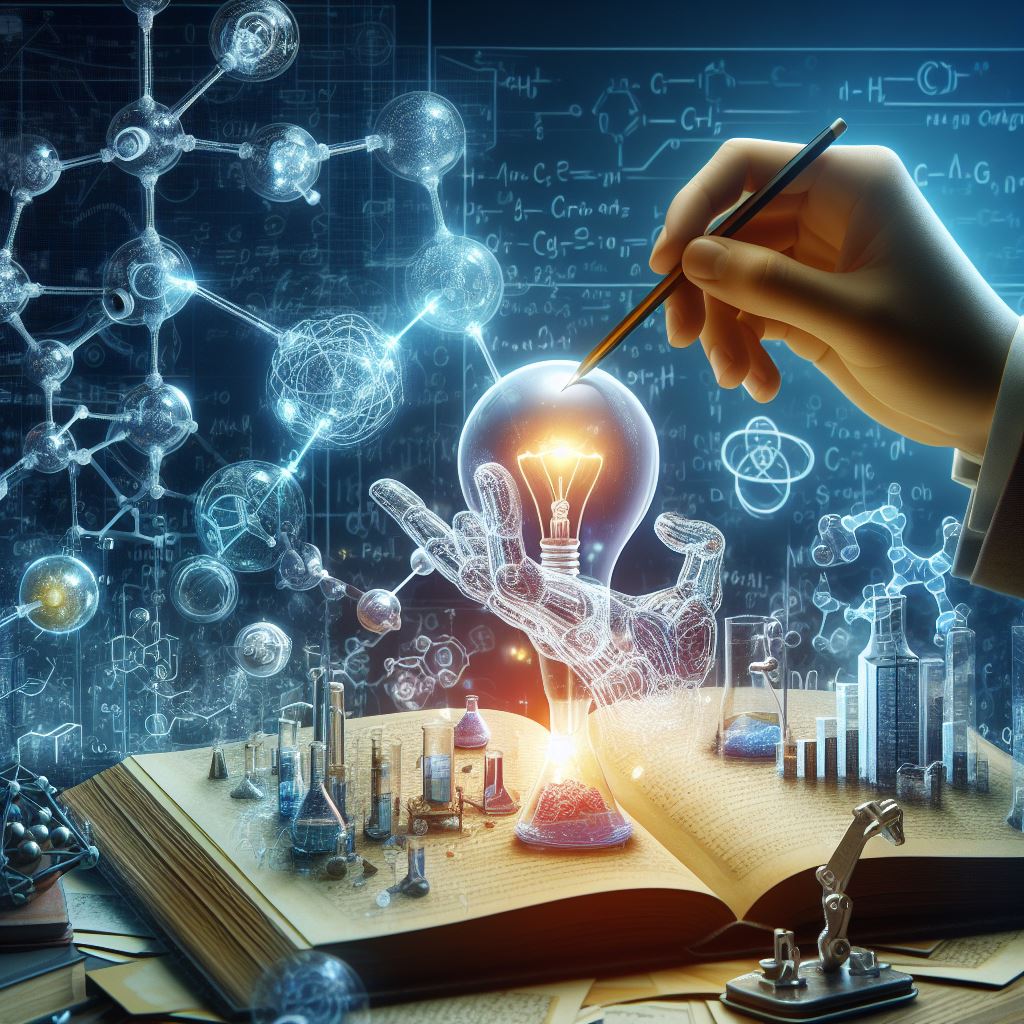
Energy Transformations
- Example: Combustion Reactions
- Combustion reactions are studied as both chemical transformations and sources of energy. Students learn how the chemical bonds in fuels are broken and new bonds are formed during combustion. Simultaneously, they understand the conversion of chemical energy into heat and light, demonstrating the interdisciplinary nature of energy transformations.
- Example: Conservation of Energy in Physical Processes
- IPC emphasizes the conservation of energy in physical processes like mechanical work or phase changes. Students learn that the total energy of a system remains constant, whether the process is physical or chemical. This interconnected understanding promotes a holistic view of energy as a universal currency in both physics and chemistry.
In essence, IPC fosters a holistic understanding of science concepts by breaking down artificial disciplinary barriers. Through integrated topics like properties of matter and energy transformations, students gain a unified perspective that enhances their ability to connect, apply, and appreciate the intricate relationships between physics and chemistry in the natural world. This approach not only enriches their scientific knowledge but also prepares them for the interdisciplinary challenges of the scientific community.
Fostering interdisciplinary thinking skills is a crucial aspect of education, preparing students to tackle complex real-world problems that often transcend the boundaries of individual disciplines. Integrated Physics and Chemistry (IPC) education plays a significant role in promoting interdisciplinary thinking by encouraging students to apply knowledge from both physics and chemistry in real-life scenarios. Here’s how IPC contributes to the development of interdisciplinary problem-solving skills:
Problem-Solving in Real-Life Contexts

- Example: Environmental Issues – IPC allows students to explore environmental challenges, such as pollution or climate change, through the lens of both physics and chemistry. They can analyze the physical processes contributing to environmental issues (e.g., heat transfer in climate systems) and understand the chemical reactions underlying pollution. This holistic approach equips students to address environmental problems from multiple angles.
Connecting Concepts Across Disciplines
- Example: Materials Science – Students engaged in IPC can explore materials science, where the properties of materials are studied from both physical and chemical perspectives. For instance, they can examine how the arrangement of atoms (chemistry) influences the mechanical, thermal, or electrical properties of a material (physics). This connection between disciplines enriches their understanding of material behavior.
- Example: Biophysics and Biochemistry – IPC facilitates the exploration of interdisciplinary fields like biophysics and biochemistry. Students can study the physical principles governing biological systems (biophysics) alongside the chemical processes occurring within living organisms (biochemistry). This integration provides a more comprehensive understanding of the complexity of biological phenomena.
Analyzing Complex Systems
- Example: Energy Systems – IPC enables students to analyze energy systems by considering both the physical aspects of energy transfer (physics) and the chemical transformations involved (chemistry). Whether studying the efficiency of engines or the conversion of solar energy into electricity, students gain a holistic perspective on the diverse factors influencing complex energy systems.
Case Studies and Project-Based Learning
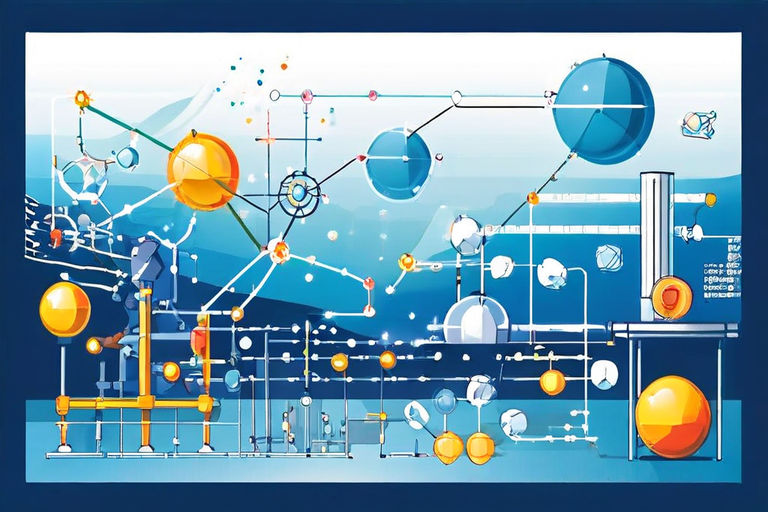
- Example: Sustainable Solutions – Engaging students in case studies or projects that require interdisciplinary thinking enhances problem-solving skills. For example, students could explore sustainable solutions to address a community’s energy needs. This project might involve understanding the physics of renewable energy sources and the chemistry behind energy storage technologies.
Interdisciplinary Labs and Experiments
- Example: Water Quality Analysis – Through integrated labs and experiments, students can investigate real-world issues such as water quality. They may analyze the physical properties of water (physics) and conduct chemical tests to assess its composition and purity. This integrated approach mirrors the collaborative nature of interdisciplinary research.
Collaboration and Communication
- Example: Scientific Communication – Interdisciplinary thinking involves effective communication of ideas across disciplines. IPC education encourages students to articulate their understanding of complex topics, bridging the language and methodologies of physics and chemistry. This skill is essential for collaboration in scientific research and problem-solving.
In essence, IPC fosters interdisciplinary thinking skills by encouraging students to explore and apply knowledge from multiple disciplines in the context of real-life scenarios. This approach not only enhances problem-solving skills but also prepares students for the complexities and challenges they may encounter in a wide range of scientific, technological, and societal contexts.
Encouraging hands-on experiments and practical learning is a cornerstone of effective science education. Integrated Physics and Chemistry (IPC) courses provide an excellent platform for incorporating practical experiments to reinforce theoretical concepts and develop scientific inquiry skills. Here’s how hands-on experiments can be seamlessly integrated into IPC education:
Reinforcing Theoretical Concepts
- Example: Boyle’s Law – In a traditional physics course, Boyle’s Law might be studied theoretically. In an IPC setting, students can engage in a hands-on experiment using gas-filled syringes to directly observe the relationship between pressure and volume. This practical experience not only reinforces the theoretical concept but also provides a tangible connection between physics principles and real-world applications.
- Example: Chemical Reactions – When studying chemical reactions, students can conduct experiments to observe and analyze reaction outcomes. Witnessing the transformation of substances allows them to connect theoretical knowledge about reaction mechanisms and stoichiometry with the practical reality of chemical changes.
Developing Scientific Inquiry Skills
- Example: Inquiry-Based Investigations – Designing inquiry-based experiments allows students to formulate questions, plan investigations, and analyze results. For instance, students could explore the factors affecting the rate of a chemical reaction. This hands-on inquiry approach fosters critical thinking, problem-solving, and the ability to design and execute experiments.
- Example: Measurement and Data Analysis – Practical experiments in IPC provide opportunities for students to develop skills in measurement and data analysis. Whether measuring physical quantities in physics or recording observations during a chemical reaction, students gain proficiency in the practical aspects of scientific methodology.
Bridging Physics and Chemistry
- Example: Thermodynamics – When studying thermodynamics, students can conduct experiments that involve both physics and chemistry concepts. For instance, they could investigate the heat transfer during a chemical reaction or explore the principles of calorimetry. This integrated approach reinforces the interconnected nature of physics and chemistry.
- Example: Electrochemical Cells – Students can assemble electrochemical cells, combining knowledge of electrical circuits (physics) with redox reactions (chemistry). This hands-on activity not only reinforces theoretical concepts but also allows students to see the practical applications of electrochemistry in batteries and other technologies.
Real-world Applications
- Example: Environmental Analysis – Practical experiments related to environmental science can be integrated into IPC. Students might analyze water samples for pH (chemistry) and conductivity (physics), linking their findings to real-world issues such as water quality and pollution. This application-oriented approach enhances the relevance of scientific concepts.
Collaboration and Communication
- Example: Group Projects – Collaborative hands-on projects provide students with the opportunity to work in teams, fostering communication and collaboration. For instance, a project involving the construction of a simple machine (physics) that utilizes chemical reactions for propulsion (chemistry) encourages students to combine their skills and knowledge from both disciplines.
Connection to Career Skills
- Example: Laboratory Techniques – Hands-on experiments in IPC often involve using laboratory equipment and techniques. Students gain practical skills that are directly applicable to careers in scientific research, quality control, and various STEM fields.
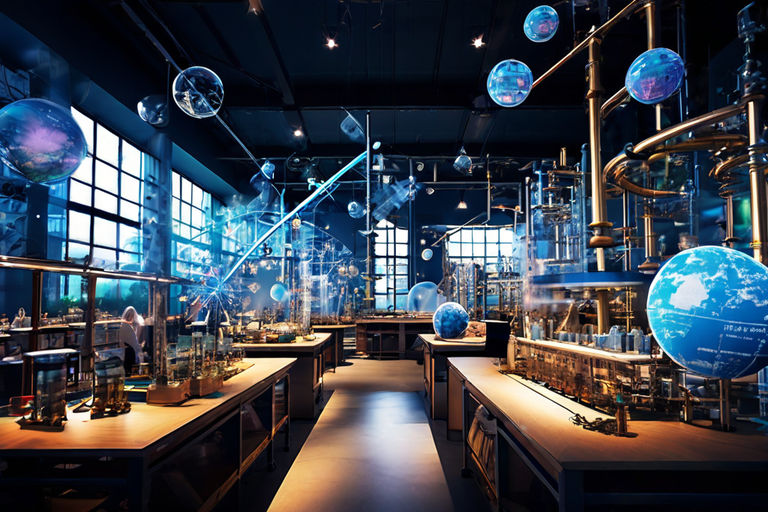
In summary, incorporating hands-on experiments in IPC education enhances the learning experience by reinforcing theoretical concepts, developing scientific inquiry skills, and providing practical insights into the interconnected nature of physics and chemistry. These practical experiences not only deepen understanding but also cultivate the skills necessary for scientific exploration and problem-solving in real-world contexts.
Preparing students for future STEM (Science, Technology, Engineering, and Mathematics) careers involves showcasing the relevance and interconnectedness between physics and chemistry. Integrated Physics and Chemistry (IPC) education plays a pivotal role in this preparation by providing students with a holistic understanding of these disciplines and demonstrating their practical applications in various STEM fields. Here’s how IPC contributes to preparing students for successful STEM careers:
Interconnectedness in STEM Fields
- Example: Materials Science – In materials science, understanding the properties of materials requires knowledge of both physics and chemistry. IPC education prepares students to explore the relationship between the structure of materials (chemistry) and their mechanical, electrical, or thermal properties (physics). This interdisciplinary knowledge is crucial in fields such as materials engineering and nanotechnology.
- Example: Environmental Engineering – Careers in environmental engineering often involve addressing complex issues related to pollution, climate change, and sustainability. IPC equips students to approach these challenges by integrating physics principles (e.g., understanding energy transfer in ecosystems) and chemistry concepts (e.g., analyzing chemical processes influencing air and water quality).
Practical Applications in Technology
- Example: Renewable Energy – As the demand for sustainable energy solutions grows, careers in renewable energy become increasingly relevant. IPC education enables students to explore the physics of energy conversion (e.g., solar panels) and the chemistry of energy storage (e.g., batteries). This integrated knowledge is essential for those pursuing careers in renewable energy technologies.
- Example: Biotechnology – Biotechnological applications often require an understanding of both physics and chemistry. IPC prepares students for careers in biotechnology by integrating concepts such as biophysics and biochemistry, providing a foundation for understanding the principles behind techniques like DNA sequencing and protein analysis.
Research and Innovation
- Example: Scientific Research – Many STEM careers involve research and innovation. IPC cultivates students’ research skills by encouraging hands-on experiments and inquiry-based learning. The ability to integrate knowledge from physics and chemistry is crucial for conducting meaningful research in fields ranging from medical research to materials development.
Problem-Solving in Engineering
- Example: Chemical Engineering – Chemical engineering involves applying principles from both physics and chemistry to design and optimize processes for the production of chemicals, fuels, and materials. IPC provides a foundation for students interested in pursuing careers in chemical engineering by emphasizing the interconnectedness of these disciplines.
- Example: Electrical Engineering – In electrical engineering, an understanding of the physical properties of materials (physics) and the behavior of electrons and atoms (chemistry) is essential. IPC prepares students for careers in electrical engineering by providing a comprehensive view of the principles that underlie electronic devices and systems.
Integration of Computational Skills
- Example: Computational Chemistry and Physics – The intersection of physics and chemistry is prominent in computational fields. IPC education can introduce students to computational methods used in both physics and chemistry, laying the groundwork for careers in computational chemistry, physics simulations, and data analysis.
Preparation for Advanced Studies
- Example: STEM Disciplines in Higher Education – For students considering higher education in STEM disciplines, IPC provides a solid foundation. The interdisciplinary skills developed in IPC contribute to success in college-level courses and facilitate seamless transitions into more specialized fields such as physics, chemistry, engineering, or computer science.
In essence, Integrated Physics and Chemistry education serves as a bridge that prepares students for the interdisciplinary nature of STEM careers. By showcasing the relevance and interconnectedness between physics and chemistry, IPC equips students with the knowledge, skills, and mindset needed to thrive in the diverse and dynamic landscape of STEM professions. It lays the groundwork for a future generation of scientists, engineers, and innovators who can navigate complex challenges with a holistic understanding of the physical sciences.
Implementing Integrated Physics and Chemistry (IPC) education can be a transformative endeavor, but it also comes with its set of challenges. Addressing these challenges is crucial to ensuring the successful adoption and sustained effectiveness of an integrated approach. Here are some common implementation challenges and strategies to overcome them:
School Infrastructure Requirements
- Challenge: Implementing IPC may require adjustments to school infrastructure, such as specialized laboratories equipped for both physics and chemistry experiments. Not all schools may have the necessary resources to support these changes.
- Solution:
- Resource Allocation: Advocate for resource allocation to upgrade laboratories and acquire equipment that can facilitate integrated experiments. Collaborate with school administrators, local education authorities, and potentially seek external funding sources to support infrastructure improvements.
- Flexible Use of Space: Explore flexible scheduling and shared use of existing laboratories to optimize space for both physics and chemistry experiments. This can be particularly relevant in schools with limited physical space.
Teacher Training Needs
- Challenge: Teachers may need additional training to effectively deliver an integrated curriculum, as it requires a deep understanding of both physics and chemistry concepts.
- Solution:
- Professional Development: Provide ongoing professional development opportunities for teachers. Workshops, training sessions, and collaborative planning can enhance their knowledge of integrated concepts and pedagogical strategies.
- Collaborative Learning Communities: Foster collaborative learning communities where teachers can share best practices, exchange ideas, and collectively address challenges. This can create a supportive environment for continuous improvement.
Integrating Assessment Methods Across Disciplines
- Challenge: Traditional assessment methods may be designed for separate physics and chemistry courses, making it challenging to develop assessments that effectively evaluate integrated understanding.
- Solution:
- Develop Interdisciplinary Assessments: Collaborate with teachers to create assessments that require students to apply knowledge from both physics and chemistry. This can include projects, case studies, and practical exams that mirror real-world problem-solving.
- Alignment with Learning Objectives: Ensure that assessments align with integrated learning objectives. Clearly communicate expectations to students and provide guidance on how assessments will evaluate their understanding of interconnected concepts.
Curriculum Development and Alignment
- Challenge: Designing an integrated curriculum that aligns with educational standards and addresses the specific needs of both physics and chemistry can be a complex task.
- Solution:
- Collaborative Curriculum Development: Engage educators, curriculum specialists, and subject matter experts in collaborative curriculum development. This ensures a comprehensive and well-aligned curriculum that meets both physics and chemistry standards.
- Pilot Programs: Consider piloting the integrated curriculum in small groups or select classes before full-scale implementation. This allows for refinement based on feedback and ensures that the curriculum effectively meets the needs of students and teachers.
Resistance to Change
- Challenge: Resistance from educators, students, or parents who may be accustomed to traditional, separate physics and chemistry courses.
- Solution:
- Communication and Awareness: Communicate the benefits of IPC education clearly to all stakeholders. Emphasize how the integrated approach enhances understanding, prepares students for interdisciplinary challenges, and aligns with modern educational practices.
- Gradual Implementation: Implement changes gradually, allowing stakeholders to adjust to the integrated approach over time. This phased approach can help mitigate resistance and provide opportunities for ongoing feedback.
Addressing Diverse Student Backgrounds
- Challenge: Students may enter an integrated course with varied backgrounds and levels of preparation in physics and chemistry.
- Solution:
- Differentiated Instruction: Implement differentiated instructional strategies to meet the diverse needs of students. Provide additional resources, support, and enrichment opportunities to ensure that each student can succeed in an integrated learning environment.
- Diagnostic Assessments: Conduct diagnostic assessments at the beginning of the course to identify individual student strengths and areas for improvement. Tailor instruction based on these assessments to provide targeted support.
Successfully implementing Integrated Physics and Chemistry education requires a strategic and collaborative approach. By addressing infrastructure needs, providing teacher training, aligning assessments, developing a well-structured curriculum, managing resistance to change, and accommodating diverse student backgrounds, schools can overcome challenges and create an environment where the benefits of integrated learning can be fully realized.
The future outlook for Integrated Physics and Chemistry (IPC) education is promising, driven by ongoing trends in interdisciplinary STEM (Science, Technology, Engineering, and Mathematics) education and potential advancements in curriculum development and technology integration. Here are key areas to consider when examining the future of IPC education:
Interdisciplinary STEM Education Trends
- Increasing Emphasis on Interdisciplinary Learning: Educational trends continue to emphasize the importance of interdisciplinary learning, reflecting the reality of modern STEM fields. As STEM disciplines become more integrated in professional practice, education is likely to follow suit, making IPC an increasingly relevant and attractive approach.
- Project-Based and Inquiry-Based Learning: Future STEM education is likely to see a continued shift towards project-based and inquiry-based learning approaches. IPC aligns well with these trends, providing a platform for students to engage in hands-on experiments, collaborative projects, and real-world problem-solving.
- Integration of Computational Skills: The integration of computational skills is becoming increasingly vital in STEM fields. Future IPC curricula may incorporate more computational elements, exposing students to simulations, data analysis, and modeling in both physics and chemistry contexts.
Advancements in Curriculum Development
- Adaptation to Evolving Educational Standards: As educational standards evolve, IPC curricula will likely adapt to ensure alignment with national and international benchmarks. This adaptation may involve incorporating emerging scientific concepts, addressing contemporary issues, and integrating new technologies into the curriculum.
- Customization and Personalization: Advancements in technology may enable greater customization and personalization of IPC curricula. Tailoring educational experiences to individual student needs and interests could be facilitated through adaptive learning platforms, allowing students to progress at their own pace.
- Incorporation of Emerging Sciences: IPC curricula may evolve to include emerging scientific disciplines that span physics and chemistry. For example, the integration of concepts from fields like nanotechnology, materials science, and biophysics could become more prominent in future IPC education.
Technology Integration
- Virtual and Augmented Reality (VR/AR): The use of virtual and augmented reality technologies can enhance the hands-on learning experience in IPC. Virtual labs and simulations can provide students with immersive environments for exploring complex concepts, conducting experiments, and visualizing abstract phenomena.
- Online Learning Platforms: Online learning platforms and resources can support IPC education by providing access to interactive simulations, multimedia content, and collaborative tools. These platforms may facilitate asynchronous learning, enabling students to engage with IPC concepts beyond the traditional classroom setting.
- Data Analytics and Adaptive Learning Systems: Advancements in data analytics and adaptive learning systems can offer insights into student performance and learning patterns. This information can be leveraged to tailor instructional approaches, providing targeted support to students and identifying areas for curriculum improvement.
Global Collaboration and Networking
- International Collaboration in Education: Future IPC education may see increased collaboration between educational institutions globally. This collaboration could involve sharing best practices, co-developing curricula, and engaging in joint research projects, fostering a more interconnected and globally aware approach to STEM education.
- Networking and Professional Development: The use of technology and online platforms can facilitate networking and professional development opportunities for IPC educators. Virtual conferences, collaborative forums, and online communities can serve as platforms for sharing experiences, resources, and innovative teaching strategies.
In summary, the future outlook for Integrated Physics and Chemistry education is marked by a commitment to interdisciplinary learning, advancements in curriculum development, the integration of technology, and a global perspective. As STEM fields continue to evolve, IPC education is positioned to play a vital role in preparing students for the interdisciplinary challenges and opportunities that lie ahead in scientific research, technology, and innovation.


